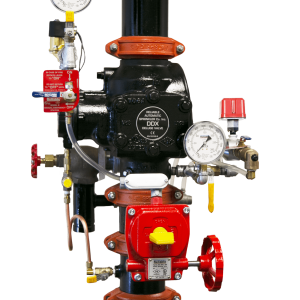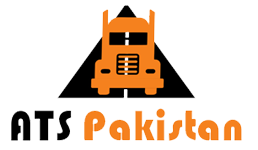Fire Sprinkler System
Fire Sprinkler System

RELIABLE SPRINKLER SYSTEM

RELIABLE RISER CHECK VALVE

DDX DELUGE VALVE USA

OS&Y FLANGED GATE VALVE

FLANGED SWING CHECK VALVE CHINA

DELUGE VALVE CHINA

FLANGED OS&Y GATE VALVE CHINA
What Is A Sprinklers System?
Fire Sprinkler system is an active fire extinguishing system. This system basically helps to control the fire. Fire Sprinkler System immediately detect trigger the fire and takes quick action to dramatically reduce the fire. Water is used as an extinguishing agent in Fire Sprinkler System. It is provided with a fire-sensitive fusible element. It protects from the fire in absence of manpower. Fire Sprinkler system detects the fire and protects us from fire disasters. This system consists of a water supply system. The water supply system provides sufficient pressure and provides flowrate to a water distribution piping system, onto which fire sprinklers are connected. A fire sprinkler system provides a sufficient amount of water to suppress the fire before the flames spread out and cause a disaster.
Fire Sprinkler System is widely used worldwide. Historically fire sprinkler system was used in factories and large commercial buildings but now they can be used in homes, offices, and daycare centers to prevent fire disasters.
Design of the Fire Sprinkler System
Most of the fire sprinkler systems are designed according to the specific needs of the building such as the area and density of the building. Firstly, the engineers analyze the building to determine what kind of fire hazards are expected in the building. The design area is that area of the building where fire can happen. Design density is the estimation of how much water is required per square foot. When the design area and density are determined, then the fire sprinkler system is designed according to the amount of water required.
Components Of Sprinklers System
Orifice (Opening):
The size of the orifice of the fire sprinkler system may vary. The size of the opening may affect the working of the fire sprinkler system. Opening size has a major impact on the pressure and flow rate of the water. Opening size may depend on the pressure and flowrate required for extinguishing the fire.
Control Valve:
The control valve is situated in the opening of the fire sprinkler system. If we are not using the sprinkler, then the control valve is in the locking position. The colour of the control valve is red for easy access. There is a supervisory switch, through this switch we can access whether the control valve is open or close.
Sprinkler head:
It is one of the essential parts of the fire sprinkler system. It is the part of the fire sprinkler system that discharges water when a high temperature is detected. This system detects when the temperature rises and then discharge water to suppress the fire.
Alarm valve:
This is another type of valve. This valve is a one-way valve. This valve controls the flow of water. When the head of the sprinklers is opened the suppression system is on due to this the pressure of the heads falls. This valve creates a difference in the pressure. Due to the pressure difference, this valve is activated automatically.
Glass Bulb:
The glass bulb includes fluids of different colors. It includes fluids of red, green, blue, white, purple, and many other colors. These fluids indicate different temperatures. Different colors have different temperature ranges. When the high temperature is detected then the glass bulb of specific temperature breaks.
Seal:
The seal is an essential part of the fire sprinkler system. The seal holds the glass bulb. The seal controls the discharge of water. Its diameter is bigger than the glass bulb. A seal is similar to a glass bulb but the only difference is in the size of diameter. When the heat is transferred to the glass bulb, the glass bulb breaks. The seal will be released from the sprinkler and water will be discharged from the pipe.
Motorized Bell:
This bell performs the function of the alarm. When the sprinkler is activated water flows towards the head and this water flow enables this sound to create the audio sound of the fire alarm.
Pressure Switch:
This switch monitors the flow of water in the fire sprinklers. This switch monitors the pressure of the flow of water.
Pressure Gauges:
These gauges measure the pressure of the sprinkler system. These gauges are two in number. One gauge indicates the pressure of the installation and the other one indicates the pressure of the water supply system.
How Do Sprinklers Systems Work?
For the fire sprinkler system to form, individual sprinklers are placed on the network of pipes filled with water. These sprinklers detect the rising temperature. When the temperature of the sprinkler head increases from 135 to 165 Fahrenheit. The liquid of different colours expands due to a temperature rise and breaks the glass head. When the glass head is beaked, the sprinkler head gets activated
These are some of the steps for the proper working of the fire sprinkler system:
- Fire breaks out
- The air temperature above the fire raises
- When the temperature increases the liquid-filled bulb will burst.
- The sprinkler plug frees the water.
- The sprinklers throw water on the fire and then the water suppresses the fire.
- Sprinklers are the main part of this system because these sprinklers spread the water on the fire.
Types of Fire Sprinkler System
Wet Pipe Sprinklers:
This is one of the most commonly used types of fire sprinkler systems. This system contains water as an extinguishing agent in the sprinkler pipes. Their operation is a very system. It is very easy to install and maintain. It is the best option to install when the building requires a simple system for protection.
Dry Pipe Systems:
It is similar to the wet pipe sprinklers. The pipes contain nitrogen and water is held back by a valve until the system is activated. It is best suited to be used in the areas where there is the risk that water will freeze in the pipes. When the sprinkler head gets activated the air comes out from the pipe. When the air pressure drops the water will come out from the pipe.
Pre-action Sprinkler System:
This type of fire sprinkler system is operated by an electronic valve. When the system triggers the fire the valve opens, the sprinkler head gets activated and water comes out from the pipes to extinguish the fire. This system requires automatic sprinkler activation.
Deluge Systems:
In this system, sprinklers are attached to the network of pipes. So that pipes should provide an immediate jet of water on the fire. When the smoke detectors detect the fire the bell gets activated and water flows out from the pipes. This system is idle because in areas where there is a risk that fire will spread out rapidly.
Foam water sprinkler systems:
This system includes a mixture of water and foam. It will discharge a mixture of water and foam to extinguish the fire. They are used in the building where the risk of a fire disaster is more.
Water mist systems:
This system is supplied with a heat absorbent vapor and operates as a wet pipe, deluge, dry pipe, or pre-action system. This type of sprinkler Is used where the water flow can cause further destruction. This kind of system is typically used in conditions where water may damage things.
Water mist systems:
This kind of system is typically used in conditions where water may damage things or in the case of minimal water supplies. They are provided with a heat absorbent vapor and operate as a wet pipe, deluge, dry pipe, or pre-action system. In this case, compressed gas is used to atomize the water so it turns into a mist.
Fire Sprinkler System Installation
These are some of the installation guides that should be followed for the error-free installation of the fire sprinkler system:
- Piping should not pass over any electrical equipment such as switchboards, electric panel, and electric motors. Piping should be kept away from electric equipment for protection purposes.
- Pressure gauges should be placed in an accessible place. It should be placed near the topmost outlet of each standpipe.
- The water source should provide enough pressure by the pump to meet the requirement of flow.
- The diameter of the main drain should be 2″.
- Sprinkles should be close to the water source.
- 10-15 gallons of water per minute should be discharged.
- The test points shall not be higher than 6 feet above finished feet with a common drain line.
- The discharged water shall discharge outside of the building onto a dashing block the could handle full flow for at least 4 minutes.
- Valves should be placed with proper addresses for easy access.
- A full port ball valve shall be at the discharge end of the drain line allowing the drain to be charged to prevent water motion when any modification occurs.
